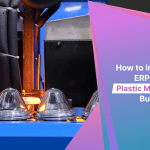Textile manufacturing as we know it today started in the 1800s during the industrial revolution. Since then, it has gone through many evolutions and revolutions, responding to changes in fashion and technology. The textile industry now produces about $1 trillion worth of products annually, and that number is only expected to grow.
The textile industry in the 21st century is different from what it was in the 19th century or the 20th century. There are many challenges that this industry faces, and they need to be addressed to keep up with the modern-day world.
What Are the Challenges Facing the Textile Manufacturing Industry?
The textile manufacturing industry is facing many challenges. Some of the main challenges include the following:
The move away from traditional materials to synthetic fibers and fabrics
The first synthetic fabric made from petrochemicals was invented in 1935. Since then, they’ve only become more and more prevalent. In 2021, they comprised 62% of all the fabric manufactured.
The move away from traditional textiles to synthetic fibers and fabrics is a trade-off. The positives of this move are the increased availability of clothes that are cheaper to produce. The negatives of this move are the increased environmental impact, ethical concerns about sweatshops, and the rise of fast fashion.
This change is challenging for companies creating synthetic fabric and those producing primarily natural fibers.
Companies that focus on synthetics must compete with absurdly low prices set by those using unethical labor practices and keep up with the breakneck speed of fashion changes.
Those who continue to favor natural fibers must compete with the price and bulk of synthetics.
The changing demands of consumers, especially in the western world
People have become much more conscious of the environmental impact of their clothing and the textile industry’s reliance on fossil fuels. This has led to a demand for more eco-friendly materials, such as organic cotton and bamboo fabrics.
Brands are increasingly looking to new technologies to create innovative products to meet these demands. The need for a sustainable and environmentally friendly production process
The cost of production and labor
High production costs make it difficult for companies to stay competitive in the global market. This is because they have to charge higher prices for their products than those produced by competitors overseas who can produce them at lower prices due to lower labor costs or other factors such as cheaper raw materials or government subsidies.
The need for a sustainable and environmentally friendly production process
The textile industry is one of the most polluting industries in the world. The textile industry’s pollution is primarily caused by water and air pollution. Pollution from textile manufacturing has a significant impact on the environment, as well as human health.
Textile production creates a lot of pollution because it consumes large quantities of water and energy, uses chemicals, and generates toxic by-products like dyes, which can harm people and animals.
How an ERP Can Help Your Textile Manufacturing Business
Textile manufacturers face many challenges in their business, but many of them can be solved with an ERP system. These systems provide a centralized platform for all operations and staff to share information.
Keep on top of the competition
If you want to survive your competitor’s unsustainable low pricing, you must figure out how to cut costs and become more efficient without sacrificing quality.
An ERP can help textile manufacturing companies become more efficient in the following ways:
- Track inventory and production processes. This will help you reduce waste and help you manage your raw materials and inventory. It will also help you cut out any wasteful or excessive steps in your process.
- Manage customer relationships and orders. Keeping a good relationship with your clients is one of the most critical elements of thriving in a competitive environment. Never misplace orders or make promises you can’t keep with an ERPs constantly updating information.
- Access data for business decisions. Do you always know the margin for all of your products? Probably not. Many elements go into production, and consolidating all that information without an ERP is almost impossible.
Become more innovative
Consumers are becoming increasingly aware of the negative impact of poor practices in textile manufacturing. Therefore, innovating more environmentally friendly processes should be a top priority for companies.
An ERP can help with R & D. It streamlines the process of managing research and development initiatives. The software can help to manage projects, tasks, and documents in a way that is efficient and easy to navigate.
Increase your employee’s efficiency
Paying employees poverty wages is a terrible business practice, making it especially hard for other companies to compete. One of the best ways to combat this is by increasing your employee’s productivity.
An ERP will automate tasks that would otherwise bog down your employees’ productivity. This frees them up for creative or complex tasks while also increasing the accuracy and speed of data entry and other jobs better performed by a computer.
Become more environmentally friendly
The textile industry has been looking for ways to become more environmentally friendly.
ERP software can track, manage and reduce pollution by giving companies an accurate idea of their environmental impact and what they need to do to comply with environmental regulations.
Another way to reduce these types of pollution is by using an ERP system to monitor the environment. This system can identify potential problems before they happen and take corrective measures to prevent them from happening.
Use an ERP To Get Ahead
The textile manufacturing industry is one of the oldest industries in the world. However, the modern problems confronting companies these days require modern solutions. That’s why you need an ERP. An ERP can help you transform your company into its most efficient self.
ERP systems are designed for specific industries, so it’s crucial to find one that is tailor-made for your industry. Confianz can help you figure out the best match for your company and assist you in implementation and any other problems that arise.
Understanding Acumatica
Acumatica ERP is a cloud-based enterprise resource planning system. It is designed to help manage an organization’s business processes, such as accounting, inventory management, manufacturing, customer service, etc. Acumatica was specifically designed to be highly flexible and to allow any industry to modify it for their use cases.
However, they have specific solutions geared towards:
-
- Distribution (Acumatica Distribution ERP)
- Service industries (Acumatica service management ERP)
- Manufacturing (Acumatica Manufacturing ERP)
- Retail-commerce (Acumatica retail commerce ERP)
- and construction (Acumatica Construction ERP)
Acumatica has a considerable market of third-party apps that allow businesses from any industry to create a solution that works for them. Get Acumatica consultation services from a certified Acumatica partner!
Call us today to get started!







